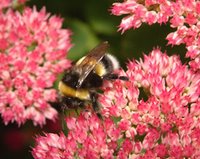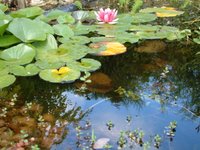Boxing clever - real estate for wildlife

Wild animals have the same basic needs as we do - to eat, drink, reproduce and rest. It is the latter two that nest boxes cater for and now is a good time to install them. Reproduction and resting require somewhere sheltered from rain, frost, wind and sun, and protected against predators. With diminishing natural nest sites, nest boxes are an increasingly important resource.
Holed bird boxes for tits and open-fronted boxes for robins and flycatchers are the most familiar but there are boxes for many other birds including starlings and owls, as well as 'sparrow terraces' with 3 adjoining boxes so they can nest communally. Reproducing mason bees, bumblebees (pictured), bats and hedgehogs are catered for too.
| For more wildlife gardening advice, ebooks, information, projects and jokes please visit: www.thewildlifegarden.co.uk |




